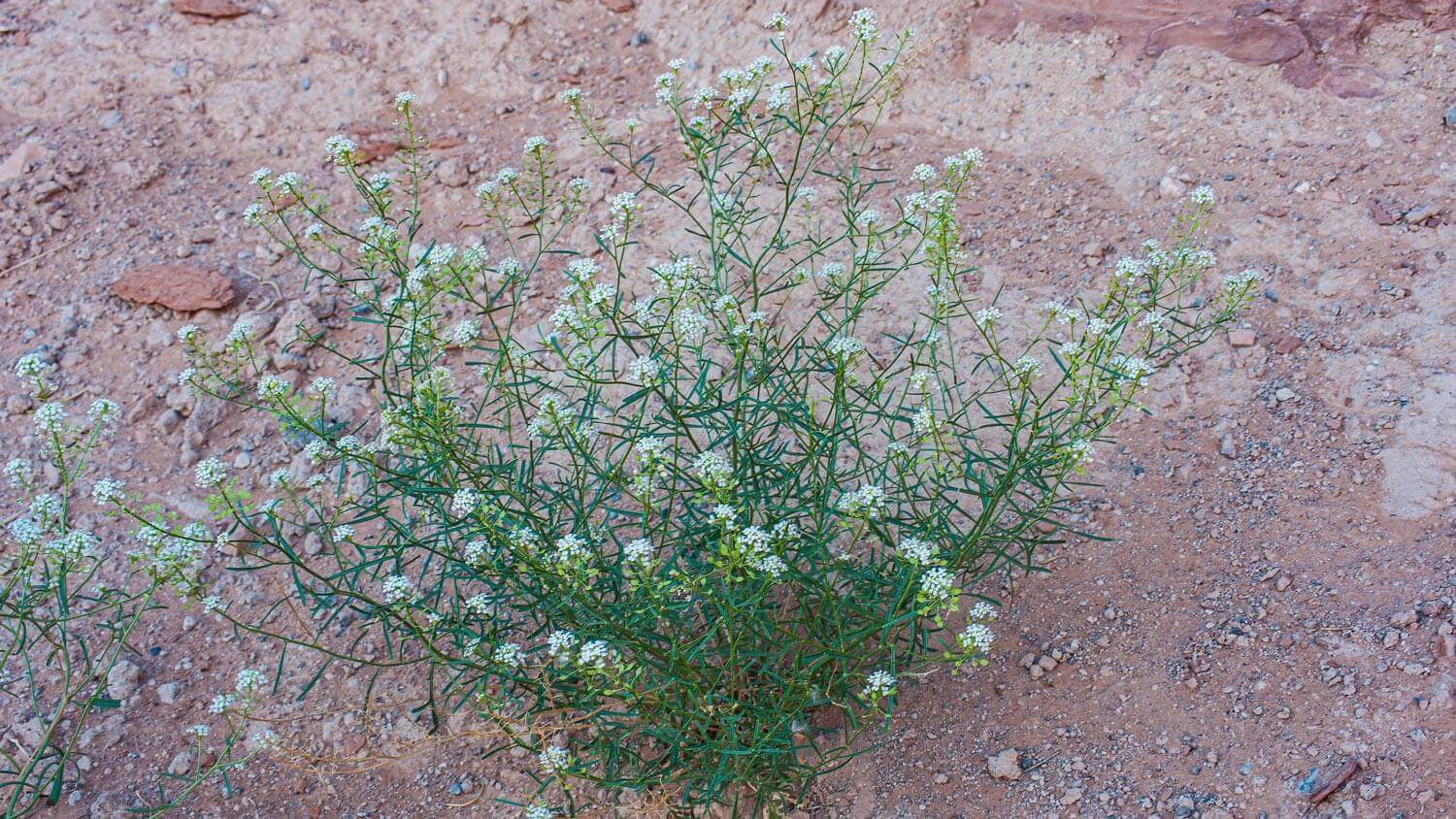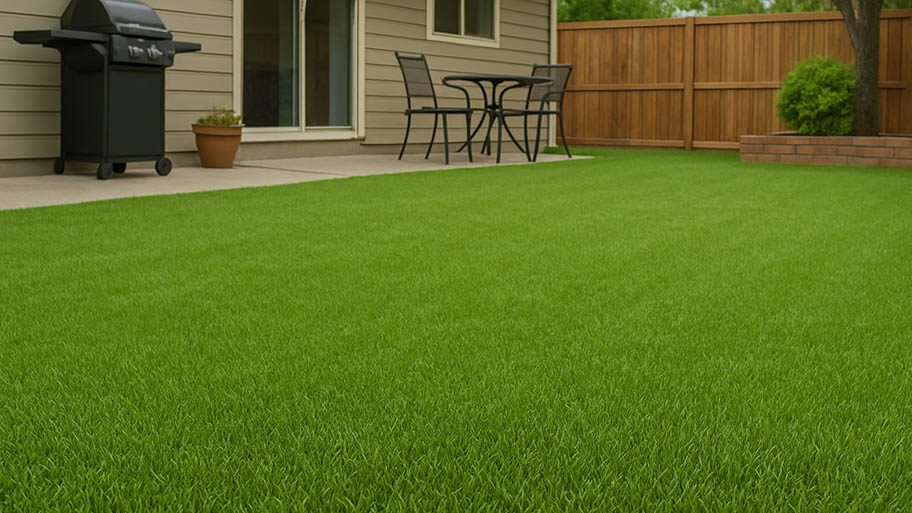
Removing an old lawn is often necessary to plant new grass or build a new outdoor structure. Find out what to budget for your lawn removal cost.
Let’s do some soil-searching


Weeds can tell you what’s happening beneath the surface of your garden beds and lawn.
The type of weeds that grow reveal whether your soil is compacted, not draining right, or too acidic.
You can call a landscaper to help with weed removal or soil testing.
Weeds aren’t always the root of the problem—sometimes they’re the solution. While it’s true that weeds spread quickly and can be unsightly, they can teach us a lot about our soil.
By knowing how to read your weeds, landscapers can figure out how to supplement and enrich your soil, as well as how to choose the best plants for a specific area. So before you grab that weed whacker, or call a local weed removal pro, look closely to see if you can read the secrets of your garden.
Many plants like a variety of conditions. For example, a plant may tolerate poor drainage but still indicate rich soil, or it may grow well in compacted soil that is high in a vital nutrient, such as nitrogen. When evaluating your soil, it’s also a good idea to use a soil testing kit in early spring to see your PH balance. Generally speaking, you want a PH level between 5 and 7.
Soil that is damp or soggy indicates poor drainage. Unless you plant something that is bog-loving, the chances are anything you plant in an area that has poor drainage will suffer from root rot and eventually die. Before you plant, you’ll want to remedy by amending the area either by creating a drainage system or adding drainage such as gravel and peat to the soil to create a more porous environment to plant in. The following weeds indicated poor drainage and soggy soil.
Dock (Rumex spp.) can be spotted in areas with poor drainage and soggy soil.
Goldenrod (Solidago spp.) grows in wet areas with little to no drainage.
Ox-eye daisies (Leucanthemum vulgare) grow in acidic, often soggy soil.
Pigweed (Amaranthus spp.) thrives in wet areas with little drainage but can also indicate the presence of rich, nutrient-dense soil.
If your soil is compacted, it greatly reduces the amount of water that can actually get down to roots, so the soil often appears dry and crusty. Compacted soil can make it difficult for plants to take root or have thriving root systems. This can lead to major frustration when homeowners spend hard-earned money on ornamental trees and plants that fail to grow. Before you dig, look for these plants in the area which indicate compacted soil.
Bindweed (Convolvulus arvensis) thrives in compacted soil.
Chickweed (Stellaria media or Cerastium spp.) grows in compacted soil but also can indicate rich, high-nitrogen soil.
Chicory (Cichorium spp.) likewise grows in compacted soil but can indicate rich, high-nitrogen soil beneath that crusty, compacted surface.
Dandelions (Taraxacum officinale) not only indicate compacted soil, they also mean the soil is low in nutrients and generally poor soil.
Ground Ivy (Glechoma hederacea), also known as “Creeping Charlie” thrives in areas that have poor drainage and lots of shade. Add in poor nutrients and you’ll have a recipe for keeping Creeping Charlie creeping around.
Knotweed (Polygonum spp.) also loves compacted soil.
Plantain (Plantago major) can be found in compacted soil, especially in nutrient-depleted areas or high-traffic areas such as the edges of large fields or major paths in public parks.
Acidic soil is not necessarily a bad thing, but not all plants like this type of soil. Examples of plants that prefer acidic soils are azaleas, rhododendrons, and blueberries. Acidic soil can be made more alkaline by adding lime. It is also common to find acidic soil at the base of conifers such as pine trees which drop their needles, which can leave an acidic residue in the soil as they break down. If you see any of these weeds growing, you likely have acidic soil and can make plant choices (or soil amendment choices) accordingly.
Sheep sorrel (Rumex acetosella) thrives in acidic soil. The soil around sheep sorrel is often dry and sandy as well.
Stinging nettle (Urtica dioica) is abundant in acidic soil but its presence also indicates the soil is rich in nutrients.
Ox-eye daisies (Leucanthemum vulgare) grow in acidic, often soggy soil.
Pearly everlasting (Anaphalis margaritacea) loves acid soil.
Yellow Cinquefoil (Potentilla reptans) is a bright, 5-petal flowering plant that prefers acidic soils that are also sandy.

Alkaline soil is essentially the opposite of acidic soil and though many plants love alkaline soil, if the soil is too alkaline it is higher on the PH scale, meaning it’s above 7. That indicates higher magnesium, sodium, and calcium levels in the soil. Again, many plants are A-OK with this, including echinacea, lavender, and zinnias, but for some plants it can cause nutrient deficiencies, leading to stunted growth. Alkaline imbalance is easily remedied by introducing sulfur to the soil mix to rebalance the PH. Here are some weeds that indicate alkaline soil.
Chickweed (Stellaria media or Cerastium spp.) grows well in alkaline soil and can also indicate that the soil is nutrient-rich.
Chicory (Cichorium spp.) also likes alkaline soil rich in nitrogen.
Peppergrass (Lepidium verginicum) indicates alkaline soil, not necessarily unbalanced, but it’s a good idea to test PH levels.
Queen Anne's lace (Daucus carota) grows where the soil is poor but usually more alkaline.
Heavy clay soil can be one of the more difficult soils to contend with as a gardener. It’s slow to drain and can be the cause of soil compaction without lots of tender loving care: it needs to be amended every season with peat, compost, manure, and sand, and regularly aerated to avoid compaction. These weeds have no problem with it, though.
Plantain (Plantago spp.) is the greatest of all wayside herbs. It’s spotted along many a downtrodden path, football field edge, and neglected garden’s edge and has adapted to nutrient-deprived, high-traffic, compacted, heavy clay soils.
Redroot pigweed (Amaranthus retroflexus) not only can take the clay, but it also doesn’t mind when it’s compacted or it’s been trampled, either.
Quackgrass (Elymus repens) can grow nearly anywhere especially in heavy, compacted, clay soil.
Those who live in coastal climates or even along lakeshores are likely familiar with sandy soils. Quick draining, they can leech nutrients too fast and must be amended with each season with manure, compost, or leaf mulch to enrich the nutrient base and allow for more moisture and nutrient retention. There are many ornamental and native plants that thrive in sandy soil, including yarrow, bearded iris, succulents, and sedum. If you suspect you have sandy soil, keep an eye out for these weeds.
Garlic mustard (Alliaria petiolata) is classified as one of the most invasive plant species in the United States. Not only does it like woodland habitats but it has spread throughout the states enjoying the sandy soils of the eastern coastlands, including Florida.
Mustard (Brassica spp.) is often spotted growing in dry, sandy soils and coastal pastures.
Sandbur (Cenchrus spp.) is a pesky weed that runs rampant usually in lawns that grow in dry, sandy soils, known for its annoying burs that stick to your clothing and can often be painful when they stick to your skin.
Yellow Cinquefoil (Potentilla reptans) thrives in dry sandy soils that are very acidic. The yellow flowers make it easy to spot.
If you see these weeds, your soil needs an overhaul. The good news is, it’s an easy fix. The hardest part is actually tilling it, which is the process of turning the soil over either by hand with a shovel or with a rototiller machine. Once the soil has been tilled, you can add nutrients to replenish it, such as compost, manure, and planting mix.
Crabgrass (Digitaria spp.) grows where the soil has nothing left to give. Remove it, apologize, and amend your soil.
Dandelions (Taraxacum officinale) are always a sign that the area generally has nutrient-deprived soil.
Ground Ivy (Glechoma hederacea), indicates serious neglect in the soil-nutrition department.
Plantain (Plantago spp.), as previously mentioned, thrives in some of the direst of conditions and requires next-to-no care or feeding to do so.
Queen Anne's lace (Daucus carota), in spite of its royal-sounding name, indicates depleted, poor soil.
White clover (Trifolium repens), though beautiful, indicates your soil is nitrogen-deprived.
Not all weeds herald bad news or neglectful gardening. Many weeds indicate the soil areas are rich in certain ingredients for a happy, healthy garden.
Chickweed (Stellaria media or Cerastium spp.) is at home in alkaline soil high in nitrogen.
Chicory (Cichorium spp.), similarly, likes rich soil high in nitrogen.
Common groundsel (Senecio vulgaris) sprouting in the garden bed also means nutrient-rich soil.
Henbit (Lamium amplexicaule) grows where there is high nitrogen.
Knapweed (Centaurea spp.) is a sign of potassium-rich soil.
Lambsquarters (Chenopodium album) demonstrates a soil full of both potassium and nitrogen though likely low in phosphorus.
Ostrich fern (Matteuccia struthiopteris) may change your mind about weeds. This lovely plant is not only one of the prettier weeds out there, it only grows in truly fertile soil.
Purslane (Portulaca oleracea) prefers rich soil and is an indicator of high phosphorus.
If you’re staring out your window at a yard that’s a little too overgrown to make a reasonable diagnosis, consider a consultation with a local gardener or landscaper to help evaluate your soil condition and get your garden ready for spring.
From average costs to expert advice, get all the answers you need to get your job done.

Removing an old lawn is often necessary to plant new grass or build a new outdoor structure. Find out what to budget for your lawn removal cost.

Your total lawn care cost depends on several factors, including the type of service and lawn size. Our guide will cover what you can expect to pay for lawn care.

Artificial grass is a low-maintenance alternative to traditional turf. Learn how much artificial grass installation costs and what affects your price.

Dethatching can help keep your lawn healthy, but it also comes with potential drawbacks. Learn more about the pros and cons of dethatching your lawn.

Dreaming of a lush lawn but don’t want to wait for seed to grow? Use these sod questions to prep yourself for an easy and stress-free installation.

Don’t grab the shovel just yet. A lush lawn is within reach if you first learn how to grow grass in sandy soil. (Hint: Only certain types thrive in sand and silt!)